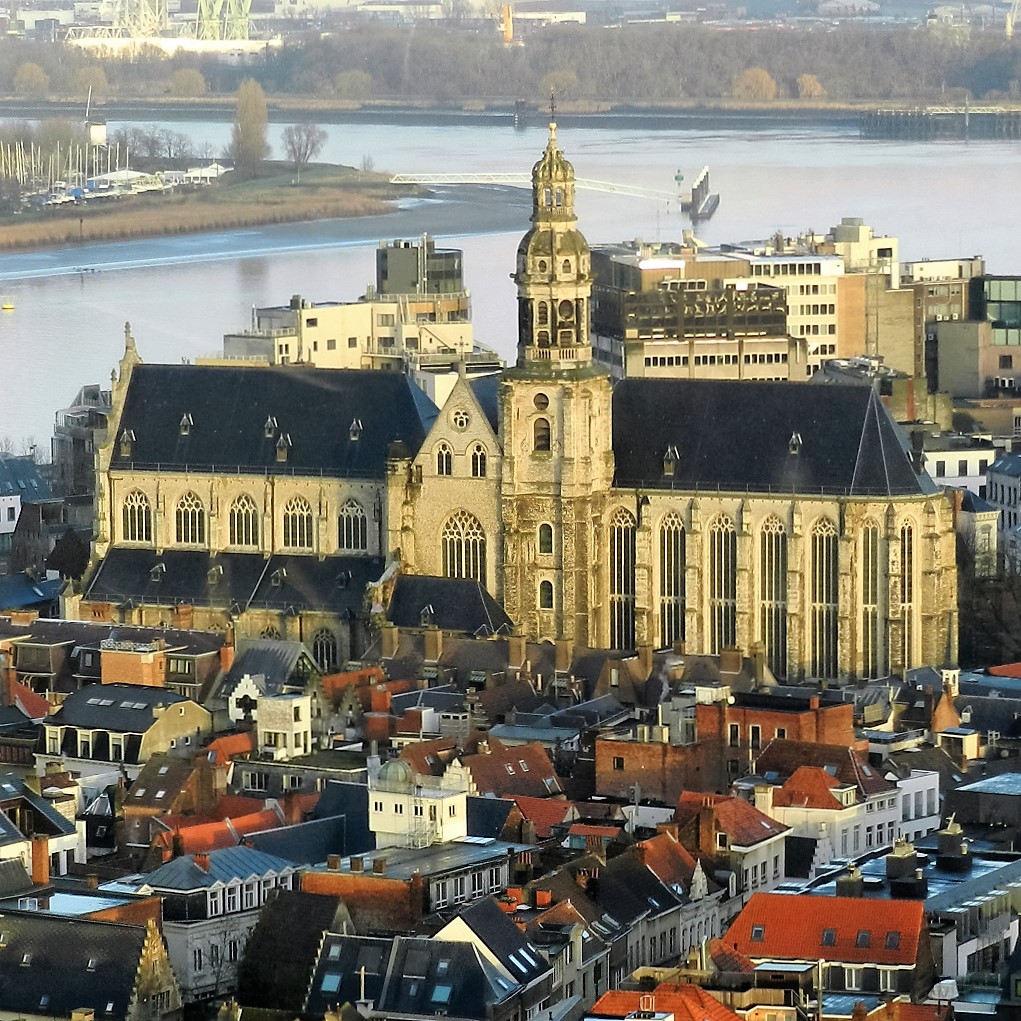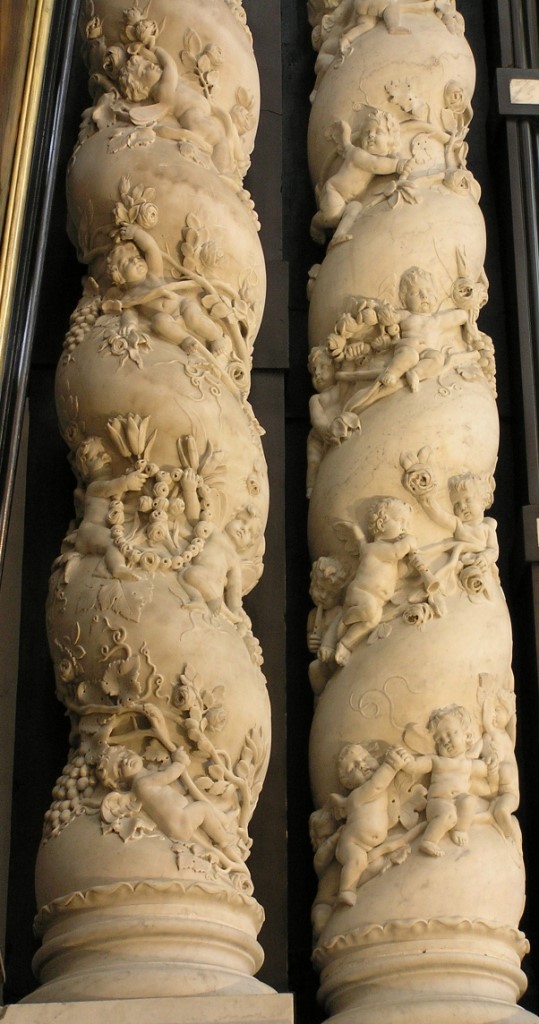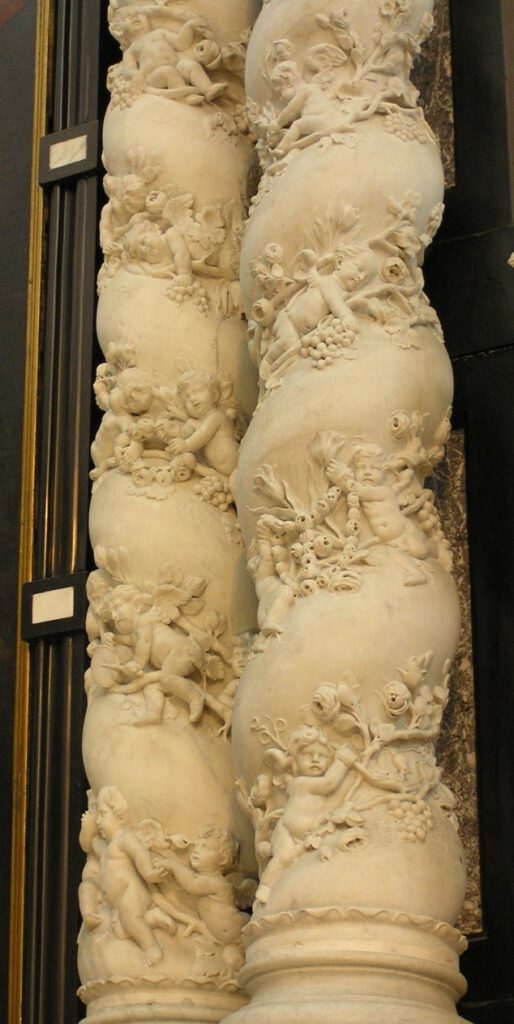Saint Paul’s, the Antwerp Dominican church, a revelation
Our Lady’s Chapel
A small church that is not a parish church. It may be part of a larger entity such as a hospital, school, or an alms-house, or it may stand alone.
An enclosed part of a church with its own altar.
and
Our Lady of the Holy Rosary
Our Lady's altar
From 1650 onwards Sebastiaan de Neve continued the design and the execution of this grandiose portico altarThe altar is the central piece of furniture used in the Eucharist. Originally, an altar used to be a sacrificial table. This fits in with the theological view that Jesus sacrificed himself, through his death on the cross, to redeem mankind, as symbolically depicted in the painting “The Adoration of the Lamb” by the Van Eyck brothers. In modern times the altar is often described as “the table of the Lord”. Here the altar refers to the table at which Jesus and his disciples were seated at the institution of the Eucharist during the Last Supper. Just as Jesus and his disciples did then, the priest and the faithful gather around this table with bread and wine., which was started by his master (Huybrecht Van den Eynde?). But because he was caught using inferior material for the execution of the crowning, de Neve was dismissed. Not until eighty years later, in 1728, the crowning of Our Lady’s altar was finished by Jan-Pieter I van Baurscheit.

The (spiral) King Solomon’s pillars, the cornucopias, the giant volutes of the upper construction with on it praying angels on their knees are all contemporary motifs. The design however was innovatory: because the two pairs of (spiral) pillars have been put concavely, they draw more attention to the altar painting. New and more elegant is the monumental upper structure, of which the tight architectural line pattern has been replaced by two gigantic undulating volutes. On top of them there is a sharp twist, on which life size figures can be seen. On the marble spiral pillars we find Rubenesque motifs: the adding of tens of frolicking putti and angels on the climbing vines with vegetal and Marian symbols.
the left hand side almost a mirror view of the right hand side
| pillar A | pillar B | pillar C | pillar D | ||
| 6 | sleeping putto | lazy putto | resting putto | ||
| 5 | somersaulting angel | ||||
| 4 | sleeping putto | ||||
| 3 | wreath of roses | wreath of roses rozen | |||
| 2 | wreath of roses with cross of roses | flute and shawm | triangle and drum | wreath of roses with cross of roses | |
| 1 | choral dance | choral dance |
The Baroque Furniture, such as the altar with its four King Solomon’s pillars, the communionThe consumption of consecrated bread and wine. Usually this is limited to eating the consecrated host. rails, the stalls and the panelling in the Northern transeptThe transept forms, as it were, the crossbeam of the cruciform floor plan. The transept consists of two semi transepts, each of which protrudes from the nave on the left and right., is abundantly decorated with floral symbols of Mary, growing at stalks and shrubs, incorporated in festoons or as trophies in the hands of angels and putti. Some Old TestamentPart of the Bible with texts from before the birth of Jesus. comparisons with plants and flowers have been associated for ever with virtues of Mary by the litanies. The rose is the most pleasing flower by its beauty and penetrating smell (according to Sirach, also known as Ecclesiasticus, 24:14). So it is not a coincidence that the series of prayers to Mary are compared with a wreath of roses. Through the penetrating smell of the rose, ‘Mary’, the putti gathering these flowers are nearly intoxicated. The white lily symbolises chastity. After all “among women” Mary is like a “lily among thorns” (Song of songs 2:2). Branches of rose bushes and grape-vines intertwine. On an altar a bunch of grapes certainly refers to the EucharistThis is the ritual that is the kernel of Mass, recalling what Jesus did the day before he died on the cross. On the evening of that day, Jesus celebrated the Jewish Passover with his disciples. After the meal, he took bread, broke it and gave it to his disciples, saying, “Take and eat. This is my body.” Then he took the cup of wine, gave it to his disciples and said, “Drink from this. This is my blood.” Then Jesus said, “Do this in remembrance of me.” During the Eucharist, the priest repeats these words while breaking bread [in the form of a host] and holding up the chalice with wine. Through the connection between the broken bread and the “broken” Jesus on the cross, Jesus becomes tangibly present. At the same time, this event reminds us of the mission of every Christian: to be “broken bread” from which others can live., but in a context of devotion to Mary it also calls up “the blessedUsed of a person who has been beatified. Beatification precedes canonisation and means likewise that the Church recognises that this deceased person has lived a particularly righteous and faithful life. Like a saint, he/she may be venerated (not worshipped). Some beatified people are never canonised, usually because they have only a local significance. fruit of Mary’s womb: Jesus”.
The late Baroque sculpture of the upper construction shows once again the theme of Our Lady of the Rosary, with SaintThis is a title that the Church bestows on a deceased person who has lived a particularly righteous and faithful life. In the Roman Catholic and Orthodox Church, saints may be venerated (not worshipped). Several saints are also martyrs. Dominic receiving the prayer beads from Mary’s hand. Anticipating the moment when also Saint Catherine of Siena will be given a rosary, the infant Jesus wants to answer her longing gesture affectionately. The Christian coat of arms of Jerusalem, underneath Mary, refers to the Brotherhood of Jerusalem-goers, which arose within the Brotherhood of the Holy Rosary in about 1629. The whole is crowned with an enormous Mary monogram.



